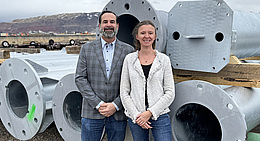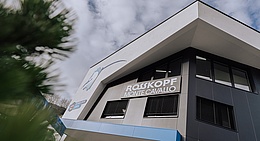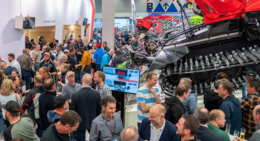Why a ropeway?
A ropeway is a well thought-out solution for Varanasi. Varanasi, India's spiritual capital with over 2,000 temples, attracts millions of pilgrims and tourists. The main railway station, Cantt, is a central transport hub, but the narrow streets and ever-increasing traffic make it difficult to get around the city quickly. The ropeway is therefore a sensible addition to the existing public transport system. Unlike trams or underground railways, it does not require any complex infrastructure on the ground and can be integrated into the cityscape without major changes. It floats above the dense city traffic and enables passengers to be transported efficiently without placing additional strain on existing transport routes. The continuous circulation system with short waiting times and high transport capacity makes it ideal for urban areas. In addition to efficiency, economic factors also played a role: the Indian government opted for the ropeway because it is more cost-effective than other local transport solutions and can be implemented more quickly.
Technical innovation, maximum comfort
The cable car system in Varanasi relies on state-of-the-art technology: the cabins were developed in collaboration with Studio F. A. Porsche and can accommodate ten people. They are barrier-free, air-conditioned and offer a unique view of the city thanks to their panoramic glazing.
The entire system is being financed as part of a private-public partnership model. The concessionaire, Vishwa Samudra Ropeways, will operate the ropeway for 15 years after commissioning.
A delegation from India visited Flums in 2023 and was impressed by the quality of Bartholet's technology. The Swiss company has global experience in the construction of ropeways and is bringing a forward-looking solution to India with this project.
Conclusion
The Bartholet project in Varanasi is a showcase project for sustainable urban mobility. The system not only relieves traffic congestion, but also demonstrates how innovative cable car technology can make cities more efficient, environmentally friendly, and livable. With this solution, India is taking an important step into the third dimension of public transportation—a model that could also point the way forward for other cities facing similar challenges.

![[Translate to English:] Foto: Leitner](/fileadmin/_processed_/a/8/csm_Vertragsunterzeichnung_Narvik_6_copyright_LEITNER_print_501f2d5c24.jpg)

![[Translate to English:] (c) Doppelmayr](/fileadmin/_processed_/b/3/csm_85-ATW_Stechelberg-Muerren_Lauterbrunnen_CHE_001_6442c0520d.jpg)








